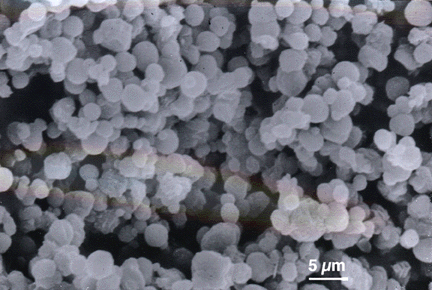


These sticky microscopic beads were engineered in a Brown University laboratory. They contain plasmid DNA, which can be used for gene therapy. Once swallowed, these tiny polymer spheres adhere to or even cross the intestinal lining. They may enter cells of the gastrointestinal tract or the bloodstream. Their contents are slowly released as the polymer breaks down in the body's watery environment, producing an active protein in the body within five days. The laboratory produces spheres in the range 0.1 to 10 �m. A size of 1�m equals one millionth of a meter. Cells are typically 3-15 �m in diameter.
Return to news release 96-102.